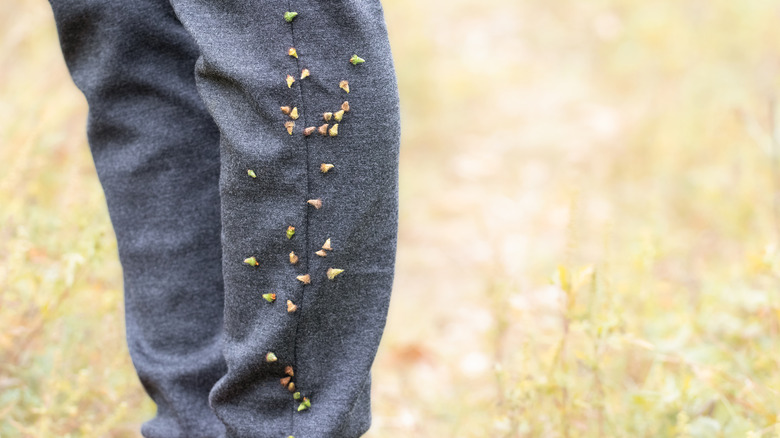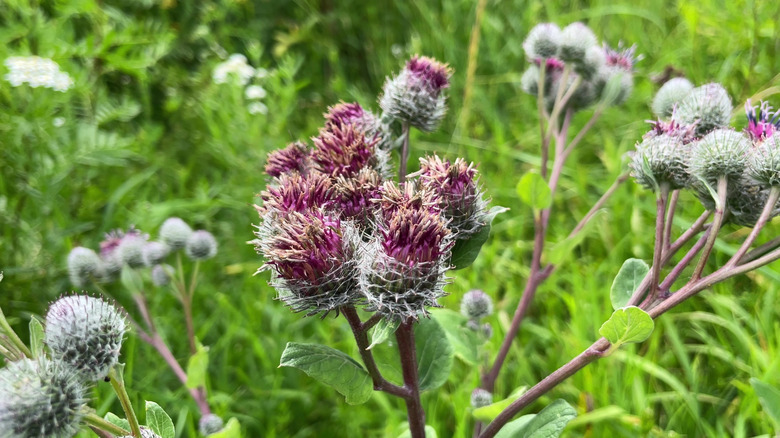What Are Those Spiky, Round Seeds That Stick To You?
If you spend a day hiking in the woodlands, you'll almost surely spend your night picking spiky round balls from your clothing. These sticky, prickly little nuisances are called burs (alternatively spelled as "burrs"), and they're actually seed pods, similar to seed and pollen cones. Burs can be a real nuisance when they get stuck to your clothes or your pets' fur, but for the plants that produce them, they are a vital evolutionary adaptation.
For plants to reproduce, they need to spread their seeds, but that's a tricky thing to do. When you're rooted to the ground, it takes a helping hand. Dandelions spread their seeds by wind, mangroves spread their seeds through waterways, and birds disperse seeds for numerous plant species. When you walk around with burs stuck to your socks, you're taking part in the exact same process. Burs are spiked so that they can stick to animals and be carried long distances before eventually being brushed off and taking root in a new patch of land, far from their parent plants.
When viewed up close, you can see that most burs have tiny hooks on the end of each spike to help them stick to unwitting carriers. This is an example of commensalism, an interspecies relationship in which one organism benefits while the other is unaffected. However, some types of burs take a more vicious approach, stabbing through the carrier's skin like a tiny needle. Burs come in all shapes and sizes, and from a wide variety of plant species.
What plants have burs?
Perhaps the best-known bur-bearing plant is the common burdock (Arctium minus), which originated in Europe, but can now be found throughout the United States. They are biennial, with the plant bearing clusters of purple flowers in its final year. Burdock burs are around three-quarters of an inch in diameter. Despite those prickly burs, burdock is actually widely cultivated in many parts of Europe and Asia for its roots, which are used as both a food and medicinal herb.
Burdock burs are big enough that picking them off isn't too terrible, but the same can't be said for Cenchrus spinifex, which commonly goes by the names grass bur, coastal sandbur, field sandspur, and spiny burrgrass. It is found in the southern and coastal United States, and in warm and subtropical regions around the world. It grows low to the ground, making it easy to miss until the burs snag on your pant cuffs. Worse still, the burs grow in tight clusters, so instead of picking one off your sock, you have to remove upwards of 20.
If there's one bur you definitely don't want to step in, it's Tribulus terrestris, known by the ominous name, puncturevine. Its burs are the kind that latch onto carriers by puncturing their skin, and they are sharp enough to break through rubber shoe soles and even bicycle tires. Although puncturevine is native to the Eastern hemisphere, it has spread to many U.S. states, taking up a role as a gardener's nightmare.

